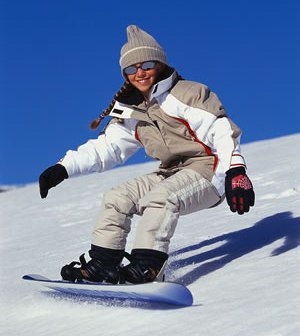To lose weight, the golden rule has always been the total caloric intake –how much you actually eat during your day and whether you burn that or not. Simple: burn all that and more = lose weight OR fail to burn that and gain it as extra beautiful weight!
Many diets flip the composition of the carbs, proteins and fats –most of the times increasing proteins and decreasing carbs just to show that more of a specific nutrient can help you burn more weight. Take Atkins for example, they actually convince people that having more proteins (more than adults need and can filter which is 0.8 to 1 grams/kg body weight of proteins) to lose weight, giving your kidneys extra work! So no, more research is showing that what matters is the total caloric intake!
So to lose weight, the whole point is to know how much you actually burn (at rest x how much you are active) per day and consume less than that – just to make sure you are losing weight. This calculation can help you know your BMR (Basal Metabolic Rate) based on height, weight, age, gender and physical activity factor, the calculate your TDEE (Total Daily Energy Expenditure) to know how much you burn thus how much must eat to be able to lose weight! It's simple math, no worries! And you can actually calculate via WebMD's Metabolism Calculator! How much do I burn at rest?
Men: BMR = 66 + (13.7 X wt in kg) + (5 X ht in cm) - (6.8 X age in years)
Women: BMR = 655 + (9.6 X wt in kg) + (1.8 X ht in cm) - (4.7 X age in years)
[NB if you are calculating with inches and pounds: 1 inch = 2.54 cm, 1 kilogram = 2.2 lb]
So let's say you are a 28 year old female, you are 166 cm, you weigh 65.5 kgs
Your BMR = 655 + 628.8 + 298.8 - 131.6 = 1451 calories/day
How much do I burn with exercise?
 |
Winter sports seem
attractive this time of year! |
Now to calculate your TDEE, multiply your BMR by your activity factor:
Sedentary = BMR X 1.2 (little or no exercise, sitting behind your desk all day)
Lightly active = BMR X 1.375 (light exercise/sports 1-3 days/week)
Moderately active = BMR X 1.55 (moderate exercise/sports 3-5 days/week)
Very active = BMR X 1.725 (hard exercise/sports 6-7 days/week)
Extremely Active = BMR X 1.9 (hard daily exercise/sports & physical job or 2 times day trainings like marathon or contests).
So if you hit the gym 1-3 times per week, you multiply your BMR by 1.375 giving you a TDEE of 1995 calories per day!
*Notice that the more you exercise, the more you can actually eat because the more you are burning! It's not a valid reason to pig your heart out though! Moreover, exercise helps in toning up your body, in increasing your BMR (how much you burn at rest), in improving your circulation system and in increasing your muscle mass while decreasing your body fat!
How much can I actually eat to lose 0.5 kg per week?
This TDEE is what you need to eat to maintain your current weight. But remember the golden rule if you need to lose weight, you must burn more than you eat, so you have to have a negative caloric balance.This is why removing 300-500 calories at a time can be done. How much your caloric deficit is always assessed by a dietitian based on your needs and readiness level, but the American College of Sports Medicine (ACSM) recommends that total calorie levels never drop below 1200 cals/day for women or 1800 cals/day for men.
When you calculate your total BMR x physical activity factor, you can remove 500 calories from the total. Why? Because 500 calories x 7 (1 week) = 3500 calories = how much you need to burn from your daily diet per week to lose 0.5 kg per week! And voila, this gives us a total of 1500 cals per day!
 |
What you eat
is as important as how much! |
Now why do we care about the composition of the diet, you ask?
Well, for the sole purpose to lose weight, meh! We really don’t care what you eat.
Having a mega dose of caffeine with donuts for breakfast, with a BigMac with supersized fries and coke for lunch topping it with an Oreo cheesecake for dinner + THEN swimming your way all through the Mediterranean sea for 3 days= congrats! You just burned all your junk!
But that’s not the case, the composition of your diet determines the composition of your body. The food you eat is what you really are, what your bones, cells, muscles, tissues and brain actually are. So when you eat junk, it’s very simple, your body is made up of junk cells. Whether you burn it or not is a totally different issue! So if you consume lots of saturated and trans fats, your adipose tissues, hormones, cellular structure and your fuel will be composed of saturated and trans fats. Your blood will spike with cholesterol and triglyceride and you will increase the fat % in your body!
So to wrap it up, have a balanced diet, don't overconsume proteins thinking they will make you lose more weight = it's the total amount of calories you burn that will help you. Therefore, eat less (than what you actually do) and exercise more to tone up your body!
I know when I say them they can't be any simpler, it's how much you are motivated and committed that actually help to put these rules to action!








